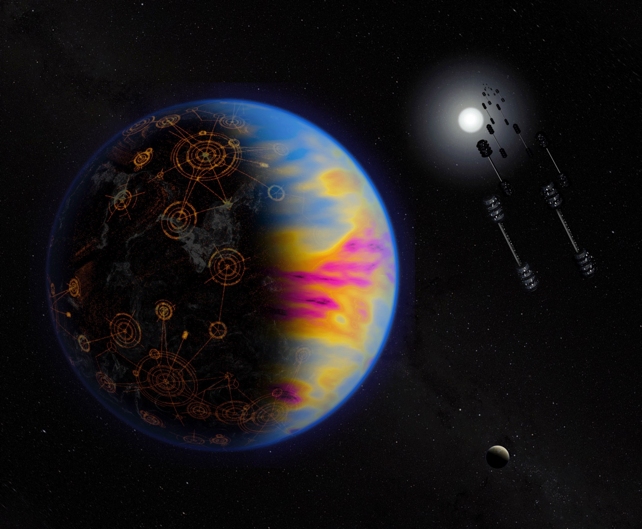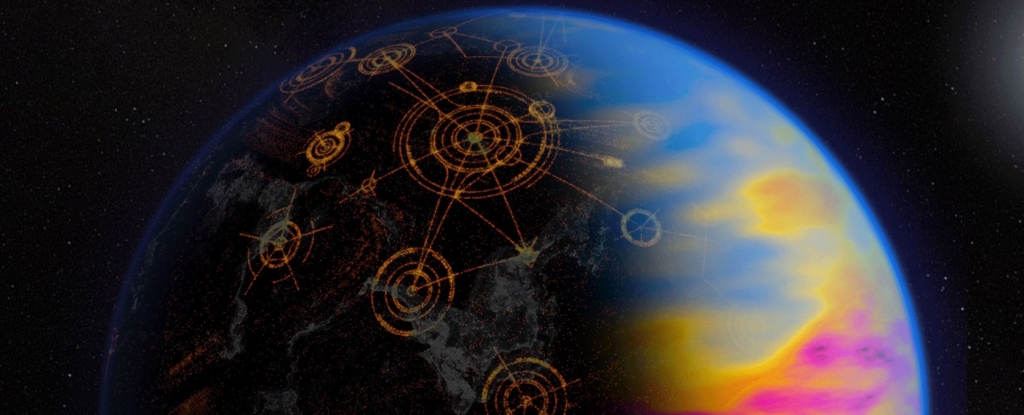Products You May Like
Given the age and size of the Milky Way, there should be intelligent civilizations all over the place. But where is everybody? A new study suggests that alien civilizations could be too advanced for us to detect.
If aliens were looking at Earth, they might spot the glint of sunlight reflecting off our solar panels. So researchers in the US turned the tables to see if we could find extraterrestrial life in the same way.
The researchers simulated an Earth-like exoplanet with different levels of solar panel coverage, then checked whether an advanced telescope could detect the panels from 30 light-years away.
It turns out, the telescope could spot them – but with a few catches. About 23 percent of the planet’s land would have to be covered with solar panels before this method could see them. Plus, the telescope would need hundreds of hours to identify the signal from background noise.
That means that finding very advanced civilizations could be just as hard as finding those that aren’t technologically advanced enough.
-

An artist’s impression of an inhabited exoplanet, with city lights on the nightside and orbiting solar power arrays. (NASA/Jay Freidlander)
Rather than wait for aliens to land on the White House lawn, astronomers are proactively searching for signs of life out in the cosmos. That includes biosignatures, like methane in a planet’s atmosphere, or technosignatures, such as radio transmissions.
The new study picked solar panels as the technosignature of choice, because previous research found they should strongly reflect ultraviolet light more than other wavelengths. Not only would that give scientists a clear marker to look for, but solar is a logical choice for generating a civilization’s energy thanks to how common silicon and starlight are across the cosmos.
But as the team found out, solar energy is almost too efficient to be a good technosignature.
First they calculated how much of Earth’s land would be needed for solar panels to generate enough energy to meet our needs, based on data from 2022. This would only require 2.4 percent land coverage, even if solar was our only energy source.
Having 10 billion people on the planet – a number that the United Nations suggests as our population peak – would only bump it up to 3 percent land coverage. Even 30 billion people, with a high standard of living, would need less than 9 percent.
There’s just no need to devote 23 percent of your land to solar panels. But we need that much coverage to spot them, so we’re unlikely to find aliens this way, the team concludes.
That has major implications for the Fermi Paradox, which points out the discrepancy between how common extraterrestrial life should be in the Universe, and the distinct lack of evidence for it.
The Milky Way is so huge and old that statistically, there should be plenty of intelligent civilizations that have colonized their own star systems or neighboring ones, and at least a few that have spread across the galaxy.
Common explanations for the silence include that Earth is in a quiet part of town, or we haven’t looked wide enough or with the right technology. Maybe we’re being deliberately excluded. Or scariest of all, we might be truly alone.
The new study adds another possibility.
“The implication is that civilizations may not feel compelled to expand all over the galaxy because they may achieve sustainable population and energy-usage levels even if they choose a very high standard of living,” says Ravi Kopparapu, lead author and a planetary scientist at NASA’s Goddard Space Flight Center.
“They may expand within their own stellar system, or even within nearby star systems, but galaxy-spanning civilizations may not exist.”
It’s bad news for everyone’s favorite hypothetical techno signature, the Dyson Sphere. Building a giant ball of solar panels around a star – which is how some scientists tried to explain the strange dimming of Tabby’s Star – is probably overkill.
“Large-scale stellar-energy harvesting structures may especially be obsolete when considering technological advances,” explains geochemist Vincent Kofman of NASA Goddard Space Flight Center.
“Surely a society that can place enormous structures in space would be able to access nuclear fusion or other space-efficient methods of generating power.”
The study was published in The Astrophysical Journal.
